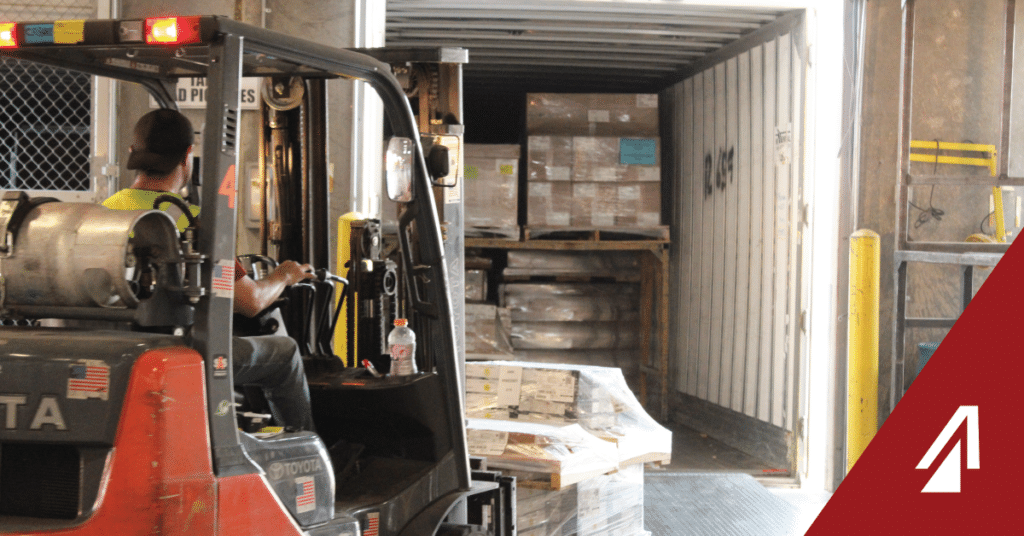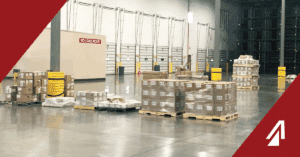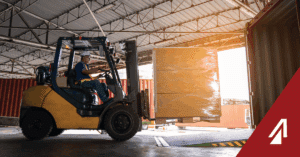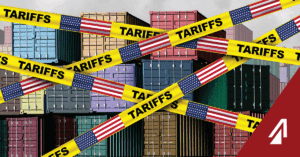Shippers are under constant pressure to optimize their supply chains, reducing shipping costs, improving transit times, and reducing their environmental impact. When shipments don’t regularly fill an entire truckload, there are two key solutions: freight consolidation and less-than-truckload (LTL) shipping.
At a glance, both methods help optimize underutilized truck space and save costs compared to full truckload (FTL) shipping. But while they serve a similar purpose, they operate in different ways. Understanding the distinctions between freight consolidation and LTL can help you choose the right strategy for your business and avoid common pain points, including potential delays, freight damage, and unnecessary costs. Let’s explore the differences.
What Is LTL (Less-Than-Truckload) Shipping?
LTL shipping is a transportation option for shipments that do not require a full truckload, allowing multiple shippers to share space on a single truck. LTL carriers pick up and deliver freight from various shippers in a single truck, transporting your cargo along with cargo from other businesses. Typically, the carrier stops at multiple locations along the route, moving the freight through a hub-and-spoke terminal system until it reaches its destination.
LTL allows shippers to pay only for the portion of the truck their freight occupies, making it economical for smaller shipments. This shipping option is ideal for shipments between 150 and 15,000 pounds. Pricing is based on freight class, weight, distance, and dimensions. (Click here to learn more about upcoming NMFC freight class changes). The transportation of goods typically involves multiple handling points and can vary significantly based on the carrier’s network.
Pros:
- Cost-effective for small, frequent loads.
- Widespread carrier networks with predictable schedules.
- There is no need to coordinate with other shippers.
- LTL carriers can meet the needs of frequent shippers with a range of service options.
Cons:
- High risk of damage from multiple touchpoints.
- Delays are common due to routing through regional terminals.
- Pricing can be inconsistent, especially with accessorial charges.
- Transit times can vary based on the carrier’s schedule and route.
What Is Freight Consolidation?
Freight consolidation involves combining multiple smaller, LTL-sized shipments—either from one company with numerous origins or from multiple shippers—into a single full truckload (FTL) shipment. Rather than passing through terminal hubs, consolidated freight usually moves directly from origin to destination, stopping only for final distribution if necessary.
The process typically includes collecting goods from various suppliers, storing them temporarily, and then shipping them together once a full load is achieved. Consolidation requires less handling compared to LTL, typically with a direct line haul to a delivery region. It can also be cost-effective while allowing shippers to share transportation expenses with others. This model is often coordinated by consolidation specialists, such as ProTrans, third-party logistics providers (3PLs), or freight forwarders, who manage the pooling of freight, transportation scheduling, and carrier arrangements.
Pros:
- Lower damage risk due to minimal handling.
- Cost savings from sharing transportation costs with other businesses.
- Reduction in transit times.
- Optimizing truck space can lead to fewer trips aligning with sustainability goals.
Cons:
- Requires careful planning with more lead time and coordination.
- Less suitable for urgent, one-off small shipments.
- May need a logistics partner to manage pooling and timing.
- It may not be ideal for urgent deliveries as consolidation is based on batch processing.
Choosing the Right Strategy?
When deciding between freight consolidation and LTL, businesses should consider several key factors to ensure cost-effectiveness, efficiency, and customer satisfaction, including the following:
- Cost – Both methods may offer reduced costs compared to FTL. It’s important to analyze the shipping costs, including transportation fees, fuel surcharges, and handling costs. Freight consolidation often results in lower overall shipping costs due to shared expenses, whereas LTL allows businesses to pay only for the space they use.
- Delivery Time – Consider the urgency of the shipment. Some shipping methods and providers, depending on their existing networks, may offer faster delivery times than others. The frequency of shipments and the impact of pooling freight may also impact transit times.
- Destination and Route – Consider the distance to the delivery location and the availability of shipping routes. Some carriers may have better coverage in certain regions. If shipments are to be delivered to multiple locations, LTL may be more efficient. In contrast, if the destinations are similar or within a logistics provider’s network, consolidation could optimize routes and costs.
- Shipment Size and Volume – If shipments are consistently small and do not require a full truckload, LTL shipping may be more suitable. If there are smaller shipments that can be grouped, however, freight consolidation could be beneficial.
- Frequency of Shipments – Consider how often shipments are made. Regular shipments may benefit from the cost savings of freight consolidation within an established network, while irregular or infrequent shipments may be better suited for LTL services.
- Handling and Packaging – Assess how goods will be packaged and handled. Freight consolidation typically involves less handling of goods, reducing the risk of damage, while LTL involves more frequent handling due to the nature of shared truckloads.
Choose LTL Shipping if:
- Your shipments are small and frequent, originating from diverse locations.
- You value booking flexibility over transit speed or damage reduction.
- You don’t have access to or don’t want to manage freight pooling resources.
Choose Freight Consolidation if:
- You ship multiple small loads to the same region or share delivery lanes with other shippers.
- You’re looking to reduce damages, transit times, and emissions.
- You work with a 3PL or logistics provider who can coordinate consolidation.
- You’re shipping internationally, especially where ocean or air freight space is tight and expensive.
It Doesn’t Have to be All One or the Other
LTL and freight consolidation are only tools in the shipping process. The most efficient shippers utilize both methods, selecting the appropriate approach based on load size, timeline, the provider’s network or capabilities, and customer expectations. The key is knowing when to use each and when to partner with a provider who can guide you.
If your LTL costs are rising or service is slipping, it may be time to explore consolidation as a more innovative, more sustainable strategy. ProTrans is a specialized logistics provider that specializes in building cost-effective, reliable freight consolidation programs for businesses across North America and globally. Whether you’re moving domestic freight or managing cross-border shipments, we can help you design a solution that reduces costs, cuts delays, and supports your long-term growth. Reach out today!



